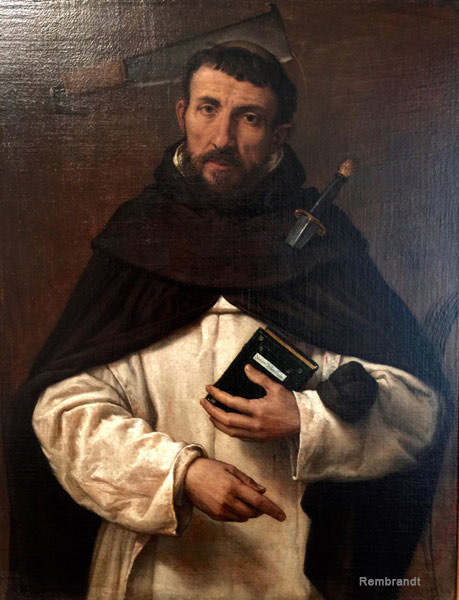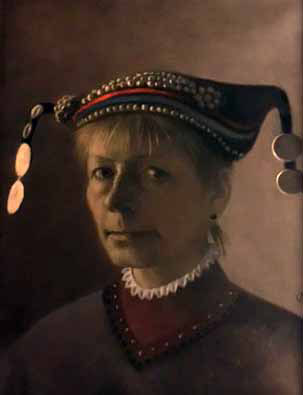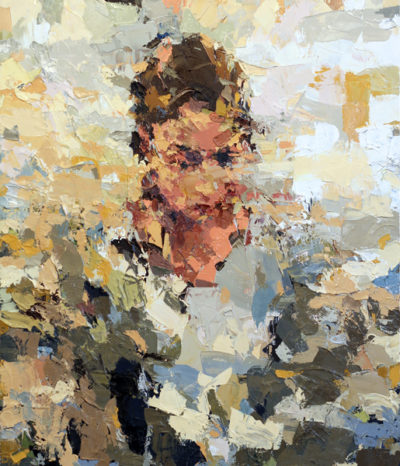
What is it Anyway?
“For me she’s the weeping woman. For years I’ve painted her in tortured forms, not through sadism, and not with pleasure, either; just obeying a vision that forced itself on me. It was the deep reality, not the superficial one… Dora, for me, was always a weeping woman….And it’s important, because women are suffering machines.” — Pablo Picasso
On an obscure wall in the Harvard Art Museum complex an old portrait of a clergyman looks back at you with a calm and somber gaze.
The man is so composed that you almost miss the meat cleaver embedded in his skull and the dagger in his chest — though one assumes he is aware of his situation, he appears to have, in time, gotten over it.

Every portrait has a narrative embedded in its gaze, a roiling mystery held in check by a silent and enforced pose.
But does that veiled story alone make a portrait compelling?
A decade or two ago a young, art school-educated artist mounted a series of small portraits at the Hopkins Group Gallery in Wellfleet. Her strokes were fresh and painterly, her eye observant. But they bugged me. What was missing? They struck me as forgettable and I couldn’t pinpoint why.
Because I was young-ish too the answer changed the way I looked at any piece of art from then on. It was this: They had the visible but lacked the invisible.
Her likenesses, so personal, did not grow beyond themselves to include the universal. The archetypal is what we, the collective unconscious, know without knowing, but want to feel.
There are many famous examples of transcendence in portraiture:
- Picasso’s anguished, stylized studies of his lover Dora Maar.
- The psychological exposure of Alice Neel’s subjects, enhanced by their twisting anatomy.
- The draughtsman David Hockney’s depictions of his patrons, each image striking a balance between the elegant and the uncomfortable.
- Rembrandt’s on-going self-portraits, buried in shadow.
- Devastating film portraits such as “The Pawnbroker,” or Pixar’s engaging deconstruction of a preteen’s mind in “Inside Out.”
- And the haunting, 5000-year-old funereal Fayum portraits; each cow-eyed likeness of an Egyptian gentry meant to be buried alive with their dead.
But the concept of portraiture opens up so many delicious questions.
Are well-imagined faces, like Raphael’s Venus, portraits?
Wellfleet artist John Hall once did a long portrait series of his Revolutionary war ancestors though he had no idea what any of them looked like.

Can iconography be portraits?
What are the sorrowing Byzantine Marys? Warhol’s electric Monroes? The endless Buddhas? The vast spectrum of Jesus faces going from blonde to black? The bearded God?
Does the subject have to be there for an artwork to constitute a portrait?
Is Van Gogh’s famous painting of his narrow bedroom, though absent Van Gogh, as much a self-portrait as his studies of his face?
Only one thing can marry them all. Memorable portraits, ones that hook (be they of the famous or anonymous), tap a universal something at once contained within and breaking through the intimate. It’s the artists’ job to be as true to the subject as they can. The rest is a crap shoot.
Without this transcendence, the portrait may live on as a period piece, a doorway to the past like Marie Antoinette’s dress — but not a revolving doorway through the person, maybe long gone, opening back to us.



